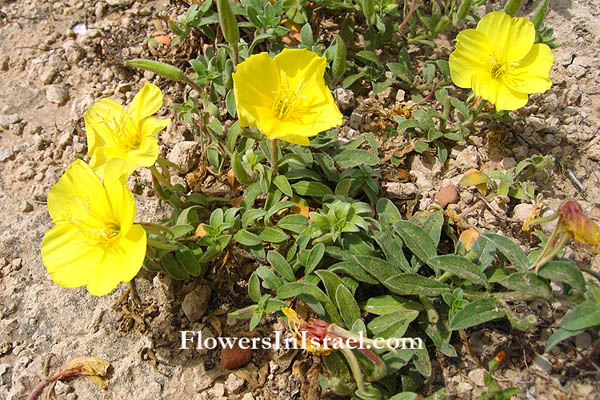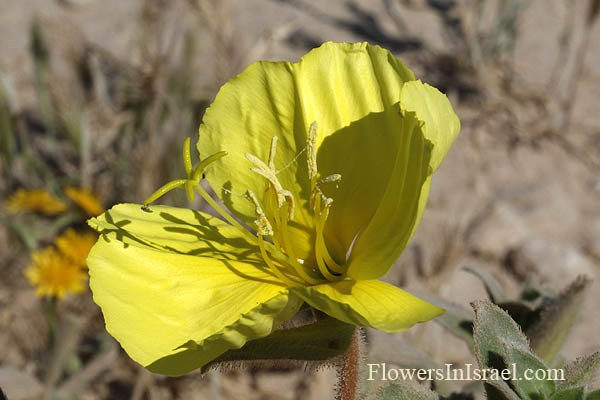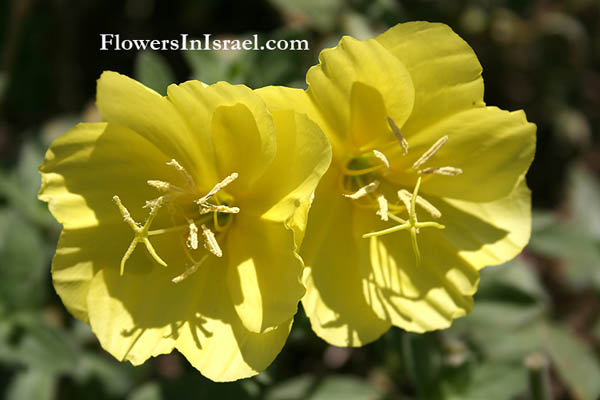Hebrew: נר-הלילה החופי, Arabic: الأخدرية
| Scientific name: | Oenothera drummondii Hook. | |
| Common name: | Beach evening-primrose | |
| Hebrew name: | נר-הלילה החופי | |
| Arabic name: | الأخدرية | |
| Family: | Onagraceae, נר-הלילה |

|
| Life form: | Chamaephyte | |
| Stems: | Erect to procumbent; 10-50 cm tall, stiff, simple or branched, strigillose, glandular puberulous on inflorescence | |
| Leaves: | Alternate, entire | |
| Flowers: | Yellow; Perfect, actinomorphic, 4-merous, with hypanthium; carpels syncarpous, ovary inferior; ovules often numerous, axile or parietal; pollen sometimes with viscin threads | |
| Fruits / pods: | Capsules cylindric, sessile | |
| Flowering Period: | April, May, June, July, August, September | |
| Habitat: | Mediterranean strand | |
| Distribution: | Mediterranean Woodlands and Shrublands | |
| Chorotype: | American | |
| Summer shedding: | Perennating |

Derivation of the botanical name: Oenothera, Greek, oinos, wine; thera, booty; wine catcher. The root when eatenh was supposed to increase one's capacity for wine. drummondii, named after Thomas Drummond (1790-1835), a Scottish naturalist. The Hebrew Name: נר הלילה, Ner-HaLaila, Night candle, the flowers open at night and at dusk they are visible in the distance hence their Hebrew name "Night candle".
The oil from the Oenothera contains gamma-linoleic acid "(GLA), an unsaturated fatty acid, which assists the production of hormonlike substances. The herb is used internally for e.g. premenstrual and menopausal symptoms. 

|